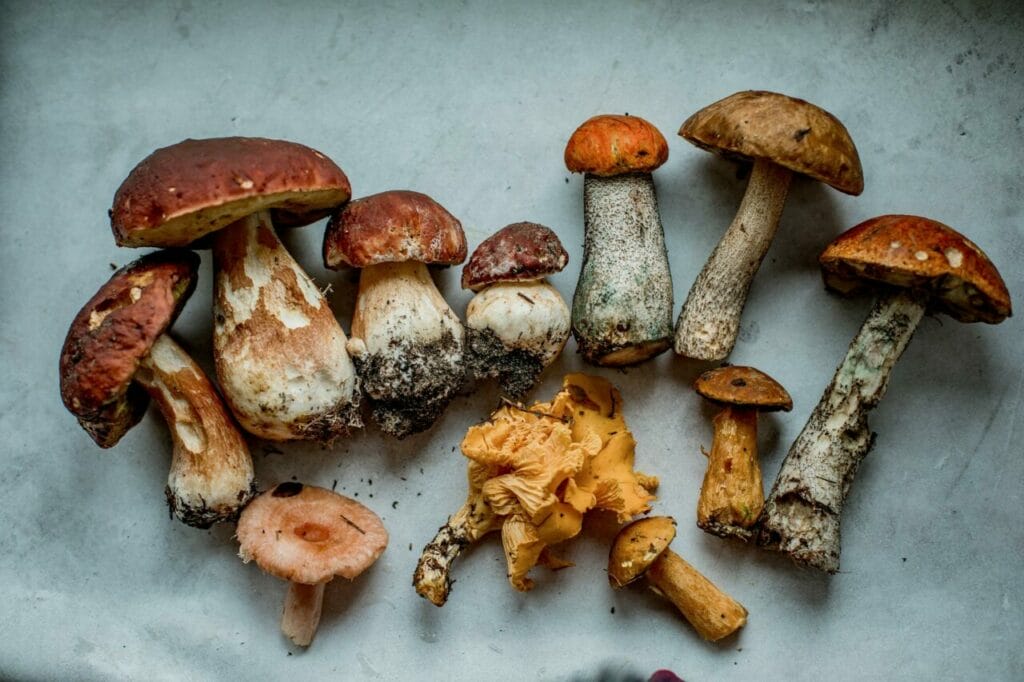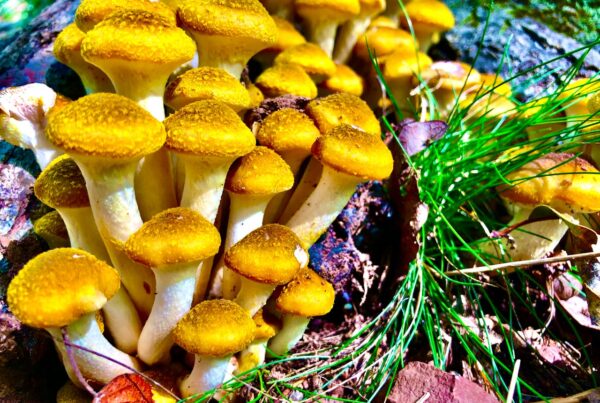Treating anxiety involves conventional methods such as medication and therapy. While these approaches benefit some individuals, others may struggle with unpleasant side effects. The increasing number of people with anxiety led to a growing interest in alternative treatments like psychedelic therapy. This involves the use of “magic mushrooms Montreal” and other substances.
Your premier destination to buy psychedelics online Canada. Fast, secure, and discreet.
Table of Contents
Key Takeaways:
- Psychedelic therapy combines talk therapy with the therapeutic effects of psychedelic substances to enhance the healing process.
- Psychedelic therapy can improve emotional well-being and overall quality of life through spiritual trips.
- The integration process is a technique within psychedelic therapy aimed at ensuring the lasting efficacy of the session.

Statistics of Anxiety Disorder in Canada
The prevalence of anxiety disorder in Canada is alarmingly on the rise, as evidenced by data from the Mental Health and Access to Care Survey 2022. The percentage of Canadians aged 15 years and older meeting diagnostic criteria for generalized anxiety disorder in the 12 months preceding the survey has doubled from 2.6% in 2012 to 5.2% in 2022.
Traditional Treatment vs. Psychedelic Therapy
The primary treatments for anxiety disorders involve a combination of psychotherapy and medication. Psychotherapy, or psychological counselling, is a collaborative process between a therapist and the individual aimed at alleviating anxiety symptoms.
On the other hand, anxiety medications relieve symptoms by tailoring treatment to the specific type of anxiety disorder and considering any coexisting mental or physical health conditions. The treatment varies depending on individual circumstances, but psychotherapy and medication serve as the foundational methods.
Sessions in psychedelic therapy are unique because they involve single or two doses of a psychedelic substance, along with other therapeutic techniques.
Psychedelic Therapy
This is a therapeutic method that gets the benefits of psychedelic substances to enhance the healing process. These substances, known for their hallucinogenic properties, have been important to holistic medicine and spiritual traditions across cultures for millennia.
Lysergic acid diethylamide (LSD) and psilocybin are the two most popular substances used in this therapeutic session. LSD induces alterations in mood, perception, and consciousness. Psilocybin, according to the Health Canada website, is the active compound of magic mushrooms. Consumption of these mushrooms can induce sensory perceptions, such as visual, auditory, or tactile hallucinations.
Range of Doses for 3 Sessions
In psychedelic therapy, experts assess patients to determine the appropriate dosage of psilocybin for their sessions. This dosage can vary, with some starting at moderate levels and others tolerating higher amounts of the substance. A treatment regimen consists of one to three medication sessions spaced several weeks apart, each lasting six to eight hours. This differs from traditional medications that require daily intake until a healthcare professional advises cessation.
Spiritual and Life-Changing Experience
Anxiety medications don’t induce life-altering visions or feelings of divine communication. They aim to manage symptoms, while therapy addresses the condition’s root causes. Psychedelic therapy can profoundly impact emotional well-being and quality of life.
The immersive experiences result in profound insights, heightened self-awareness, and improved emotional processing. These effects can promote personal development, encourage positive behavioural shifts, and enhance overall mental wellness.
Effects
| Expanded Consciousness | Altered states of consciousness facilitate a novel perception of the world. | This heightened awareness usually leads to the following: Profound insightsEpiphaniesA deeper comprehension of both oneself and the surroundings |
| Emotional Healing | Enables emotional healing by providing the opportunity to confront and process unresolved trauma, grief, or emotional pain. | This process aids:Accessing deeply rooted emotionsReleasing emotional blockagesFostering emotional well-being |
| Increase Self-Awareness | Enhance connectivity among sensory brain regions while reducing connectivity within the default mode network. This network comprises interconnected brain regions associated with self-referential thought and the subjective experience of “me.” | They serve to:Change the negativity of our thoughts, beliefs, and behavioural tendencies. Empower users to gain profound insights into their essence, motivations, and interpersonal dynamics. |
Somatic Therapy
Somatic therapy, though not usually linked with psychedelic therapy, is gaining recognition for its potential benefits. This body-centred approach explores the connection between the mind and body. It’s based on the idea that past trauma can result in sensations trapped within the body. Somatic therapists help people identify these bodily sensations and use therapeutic methods to release the tension.
Integration
This serves as a space for clients to attain clarity, gain perspective, and cultivate wisdom from their experiences with psychedelics. The transformative process unfolds during integration sessions with the therapist and the client’s proactive efforts outside of psychedelic journeys. Integration enhances psychedelic transformative effects by actively engaging with surfaced insights and emotional revelations.
Types of Integration
- Journaling. By documenting experiences, individuals can solidify memories for easier recall in the future. It also enables clients to delve into their experiences from various viewpoints to explore different perspectives, meanings, and associations.
- Art. This provides a powerful way to capture a psychedelic journey’s complex sensations and emotions within a creative and visually expressive form.
- Practicing Nature-based Approaches. These are as simple as taking thoughtful walks among the trees or refuge beside a calm body of water. Therapists can guide clients in recognizing the intricate patterns within nature or suggest utilizing natural elements like plants, stones, water, and candles as grounding aids.
- Engaging in Integration Groups. Sessions with people who share similar experiences offer a profound opportunity for reflection, support, and connection. Central to the essence of psychedelic therapy is its capacity to rekindle a feeling of interdependence and mutual understanding beyond the confines of the individual self.
How These Techniques Help in Anxiety Treatment
The basic pharmacological principle behind all psychedelics lies in their ability to act as agonists, or activators, of the serotonin (5-HT) 2A receptor. A key area of research on psychedelics is their effect on the brain’s default mode network. This network is closely linked to repetitive thinking and is implicated in conditions such as depression and anxiety disorders. Treatment can significantly reduce anxiety levels, with effects lasting up to 12 months after the session.
After a psilocybin session, which includes profound spiritual experiences, the patient meets with their therapist. During these talk therapy sessions, trained healthcare professionals strive to listen carefully to the patient. They also use specific practices and techniques to enhance the positive outcomes of the treatment.
All of these techniques will synergize and assist individuals with anxiety in finding longer-lasting relief in fewer sessions compared to conventional treatments.
Transform Your World, One Session at a Time
Many people rely on traditional treatments for anxiety, but not all find them effective or satisfying. Psychedelic therapy presents an alternative, using unique methods that can spark transformative experiences. These techniques work together to yield profound, lasting results—sometimes up to a year after just one to three sessions.
Beyond improving mental health, this therapy can also offer significant cost savings for patients. Ready to explore a new path to wellness? Discover the potential of psychedelic therapy with Zoomies Canada.
Frequently Asked Questions
Is there a specific type of magic mushroom used for psychedelic therapy?
In studies on psychedelic-assisted therapy, a common oversight is the failure to specify which type of mushroom is used. Psilocybe cubensis is usually the preferred choice.
Online magic mushroom dispensaries offer various strains to suit different preferences. You have the freedom to choose any strain to experience the therapeutic effects of psychedelics. However, exercise caution and choose a reputable vendor to help you avoid purchasing unsafe magic mushrooms from disreputable sources.
How long does psychedelic therapy last?
Psychedelic therapy involves a few stages and can vary in length. One session where the psychedelic is taken lasts between 4 to 8 hours. The therapy process, including preparation, the session, and follow-up meetings, can last from a few weeks to several months.
In terms of lasting effects, people report improvements in their mental health for several months or even up to a year after just one or a few sessions.
Does the therapist guide the patient during a spiritual trip?
Experts, such as therapists or personnel, may guide the patient during this stage. A study suggests that Spiritual Health Practitioners (SHPs) offer unique and invaluable contributions to enhancing participants’ well-being and facilitating their progress during a spiritual journey. Some use the help of an SHP, while others rely on the therapist or expert available.
Does psychedelic therapy include “set and setting” in the process?
Yes, both the individual’s mindset (set) and the physical environment (setting) are important in safely facilitating spiritual experiences during a psychedelic therapy session. The mindset or mental state of the individual shapes their spiritual journey, influencing the experience both before and during the psychedelic session. Beliefs, expectations, emotional states, and intentions determine the direction and depth of the experience.
Main Reference: Psychedelics as Reemerging Treatments for Anxiety Disorders: Possibilities and Challenges in a Nascent Field – PMC (nih.gov)
Authors Information:
Franklin King, IV, MD. and Rebecca Hammond, M.D.
Related Articles:





